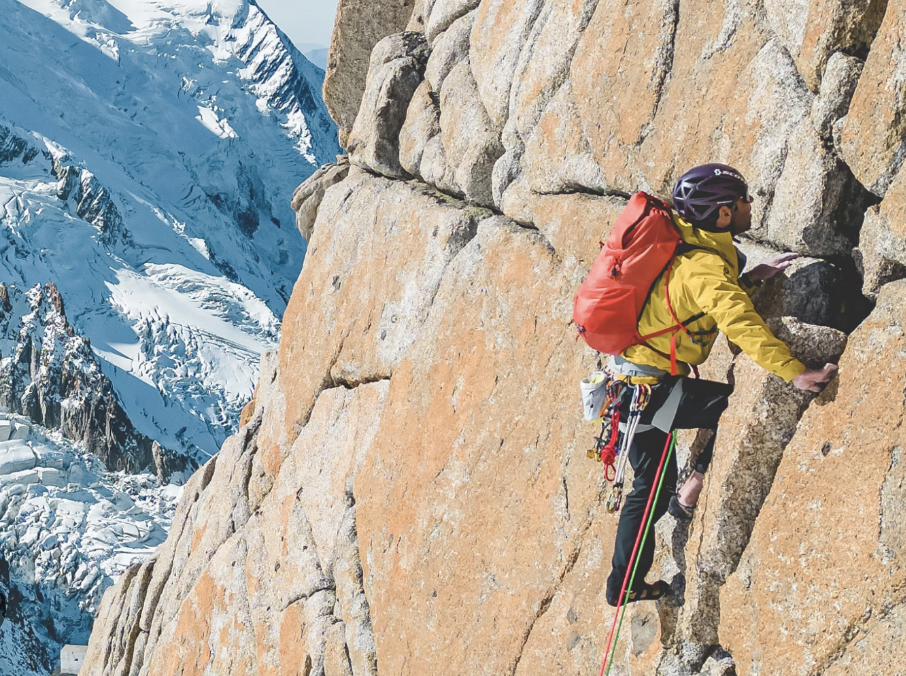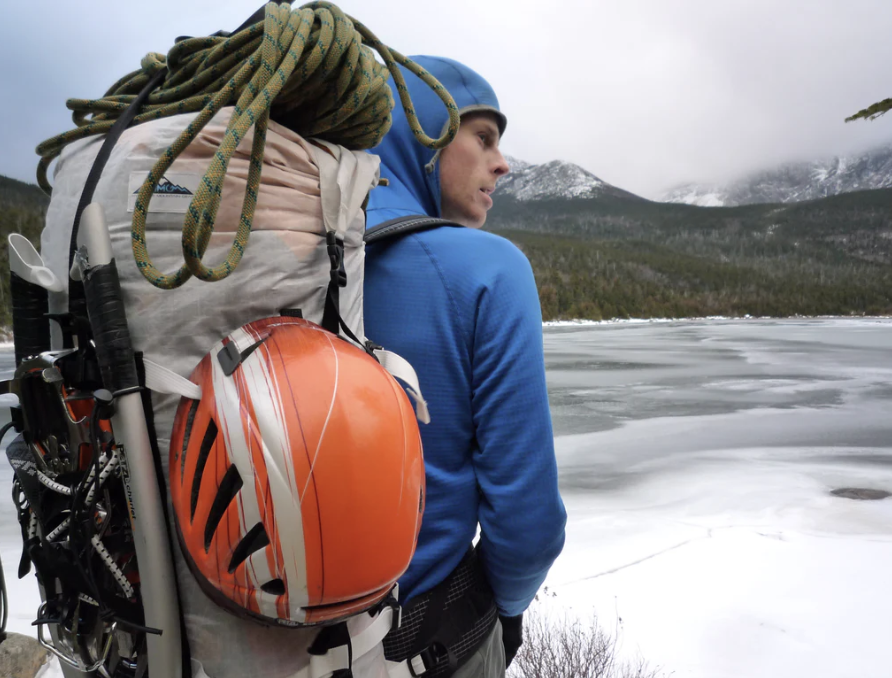What is a Climbing-Specific Backpack?
A climbing-specific backpack, also known as an alpine pack or climbing pack, is designed to meet the unique challenges of rock climbing, alpine climbing, and mountaineering. Unlike standard hiking or trekking backpacks, these packs are built for minimalism, durability, and ease of movement, ensuring climbers can carry their essential gear while staying agile on technical terrain.

Key Features of a Climbing-Specific Backpack
Minimalist & Streamlined Design
Designed for unrestricted movement—no bulky pockets or excessive straps to snag on rocks.
A sleek profile ensures better weight distribution and prevents imbalance while climbing.
Durability & Reinforced Construction
Made with high-denier nylon or Dyneema, it is resistant to abrasions from rocks, ice, and rough surfaces.
The reinforced bottom panel prevents excessive wear when placing the pack on rocky ground.
Low-Profile Fit
Snug, close-to-body fit minimizes sway and maintains balance during technical ascents.
Allows for unrestricted head movement, which is crucial when looking up while climbing.
Gear Attachment Points & Daisy Chains
External gear loops and daisy chains for clipping carabiners, belay devices, and slings.
Ice axe loops & tool attachments for carrying ice tools, ice screws, and trekking poles.
A helmet carry system is used to attach your climbing helmet when it is not in use.

Rope-Carrying System
Dedicated rope straps or top carry system to secure a climbing rope without taking up interior space.
Hydration Compatibility
Many models are hydration reservoir-compatible for on-the-go hydration.
Closure System: Top-Loading or Roll-Top
Top-loading designs with drawstrings or roll-top closures allow quick access to gear.
Roll-top models provide better water resistance in alpine conditions.
Compression Straps & Load Stability
Side compression straps keep the load compact and reduce pack movement while climbing.
Some models have removable hip belts for added weight reduction.
Adjustable & Removable Components
Many climbing packs have removable framesheets, hip belts, and padding to reduce weight when necessary.
Some alpine packs even shed their frame entirely for ultralight summit pushes.
Multiple Size Options
20-30L → Ideal for single-pitch sport climbs & lightweight trad routes.
35-45L → Great for multi-pitch climbs & day-long alpine ascents.
50-70L → Designed for multi-day alpine expeditions & big wall climbing.
Bright Colors for Visibility
Many climbing packs come in high-visibility colors to aid in emergency rescues.

Choosing the Right Climbing Backpack
When selecting a climbing-specific backpack, consider:
Your Climbing Style: Sport climbing, trad climbing, ice climbing, or alpine expeditions?
Gear Capacity: How much equipment do you need to carry?
Weight vs. Durability: Ultralight for fast ascents or reinforced for rugged terrain?
Fit & Comfort: A pack that fits snugly ensures better weight distribution and balance.
For Single-Pitch Climbs: A small 20-30L pack is enough to carry essentials like water, snacks, and layers.
For Multi-Pitch Climbs: A 30-45L pack can carry extra gear, rope, and layers for longer days.
For Alpine Expeditions: A 50-70L pack accommodates crampons, ice tools, bivy gear, and extra layers.
Pro Tip: If weight reduction is a priority, choose a pack with removable hip belts, framesheets, or padding.
Popular Climbing Backpacks
Black Diamond Speed 40 – Lightweight & versatile for alpine climbing.

Patagonia Ascensionist 35L – Minimalist design for fast-and-light ascents.

Arc'teryx Alpha FL 45 – Waterproof, durable, and ultralight.

Osprey Mutant 38 – Designed for ice climbing and technical ascents.

Mountain Hardwear Scrambler 30 – Great for multi-pitch trad climbing.

A climbing-specific backpack is a critical piece of gear for any serious climber. Whether you're tackling a multi-pitch trad route, an alpine summit, or a rugged backcountry climb, having a lightweight, durable, and streamlined pack makes all the difference.
